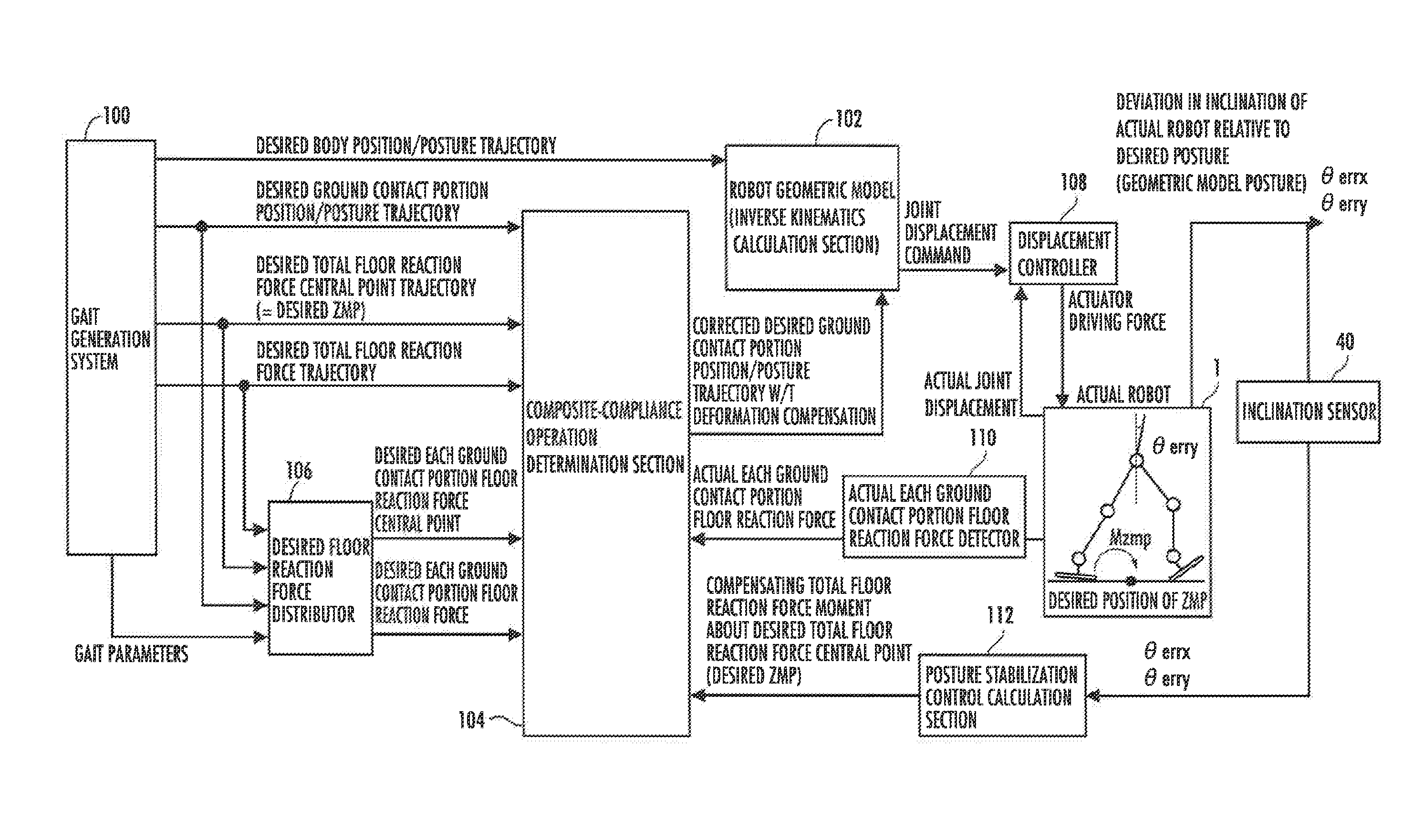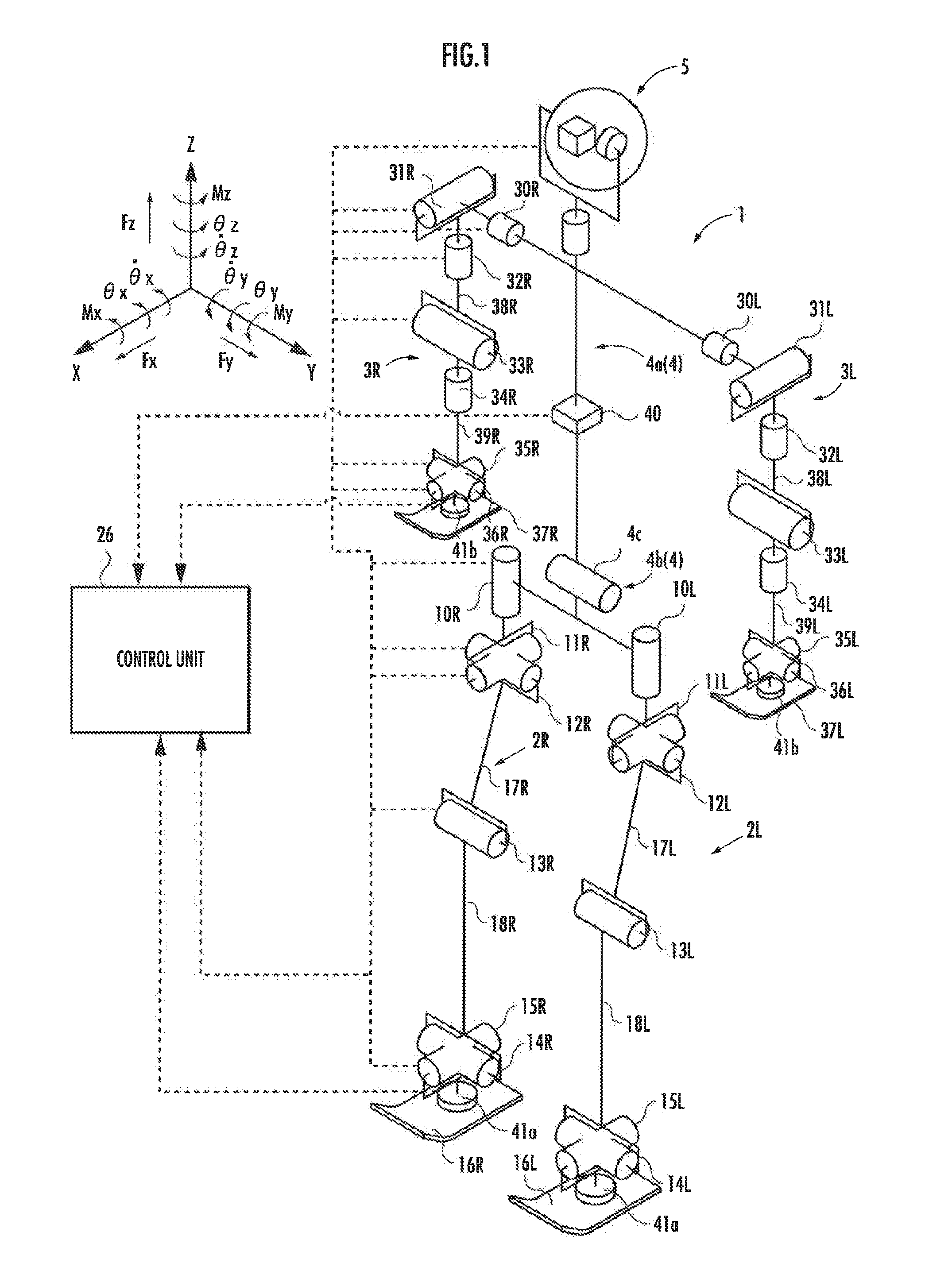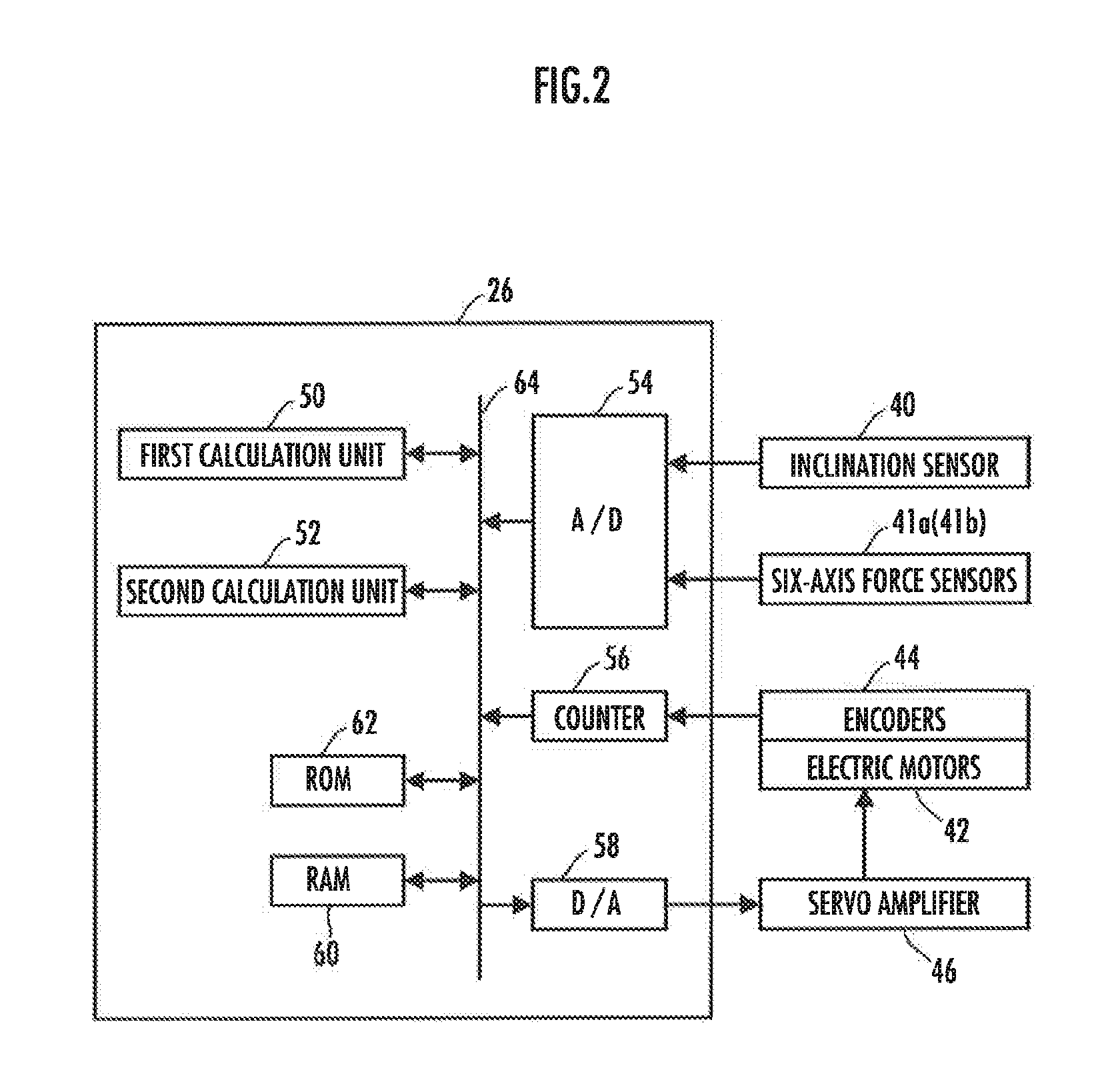Control device for mobile body
a control device and mobile body technology, applied in the field of mobile body control devices, can solve the problems of difficult implementation of smooth transition operations and difficult application of gait generation operation models in patent literature, and achieve the effect of accurate expression of transition operations and smooth operation
- Summary
- Abstract
- Description
- Claims
- Application Information
AI Technical Summary
Benefits of technology
Problems solved by technology
Method used
Image
Examples
first embodiment
[0115]As shown in FIG. 1, a biped / quadruped mobile robot 1 (hereinafter, simply referred to as “robot 1”) of a first embodiment includes a body 4 (corresponding to the “base body” of the present invention) as a base body and, as a moving mechanism that moves the body 4 on the floor surface, a pair of right and left lower limbs (legs) 2R, 2L (corresponding to the “first moving mechanism” of the present invention) interposed between the body 4 and the floor, and a pair of right and left upper limbs (arms) 3R, 3L (corresponding to the “second moving mechanism” of the present invention) attached to the respective sides of the upper portion of the body 4.
[0116]The robot 1 is configured to be able to make transitions between a biped state (first mode), in which the body 4 is supported above the floor surface by the lower limbs 2R, 2L landed on the floor, and a quadruped state (second mode), in which the body 4 is supported above the floor surface by the lower limbs 2R, 2L and the upper li...
second embodiment
[0211]the present invention differs from the first embodiment in that the following expressions 108e and 108f are used in place of the expressions 108c and 108d in the first embodiment. It is noted that h1 represents an average value of the center of gravity of the robot 1 at the time of biped walking.
ω(t)=g+2t2Zb(t)h1Expression108eϕi(t)=Iimb*h1i=1,2Expression108f
third embodiment
[0212]the present invention differs from the first embodiment in that the following expression 106b is used in place of the expression 106a in the first embodiment.
B(k)=[b1ϕ1(k)b1b2ϕ1(k)b2]Expression106b
[0213]A comparative embodiment differs from the first embodiment in that the above expressions 106b, 108e, and 108f are used in place of the expressions 106a, 108c, and 108d in the first embodiment.
[0214]Referring to FIG. 9, an operation of the dynamic calculation section of the gait generation system 100 (shown in FIG. 3) will be described. A horizontal position calculator 200 in the dynamic calculation section calculates a body mass point horizontal position Xb from a desired ZMP in accordance with the expression 100.
[0215]Further, as shown in FIG. 9, the dynamic calculation section includes a body position determiner 202. The body position determiner 202 determines the horizontal position of the body from the body mass point horizontal position Xb.
[0216]Continuous posture stabilit...
PUM
 Login to View More
Login to View More Abstract
Description
Claims
Application Information
 Login to View More
Login to View More - R&D
- Intellectual Property
- Life Sciences
- Materials
- Tech Scout
- Unparalleled Data Quality
- Higher Quality Content
- 60% Fewer Hallucinations
Browse by: Latest US Patents, China's latest patents, Technical Efficacy Thesaurus, Application Domain, Technology Topic, Popular Technical Reports.
© 2025 PatSnap. All rights reserved.Legal|Privacy policy|Modern Slavery Act Transparency Statement|Sitemap|About US| Contact US: help@patsnap.com



